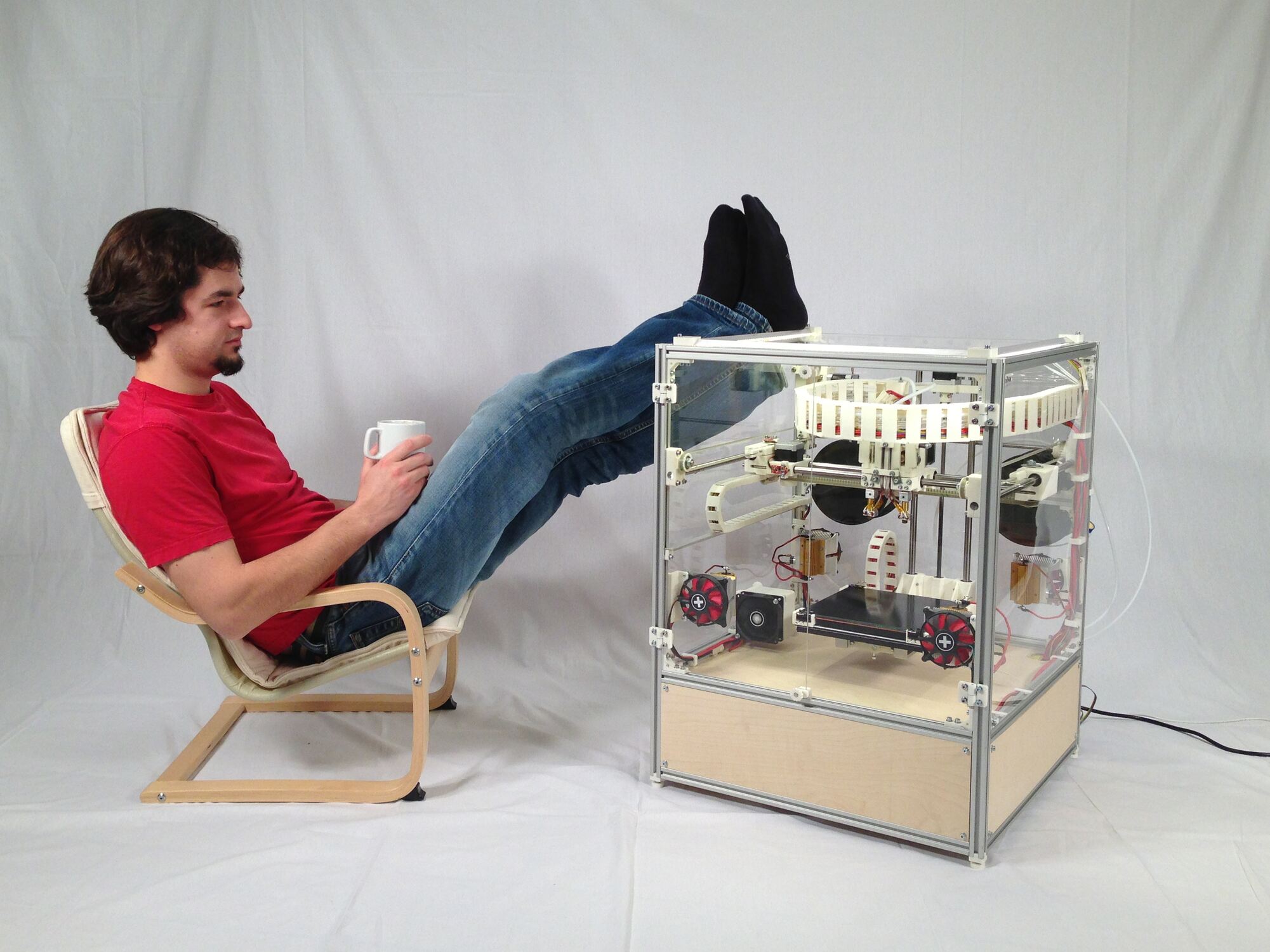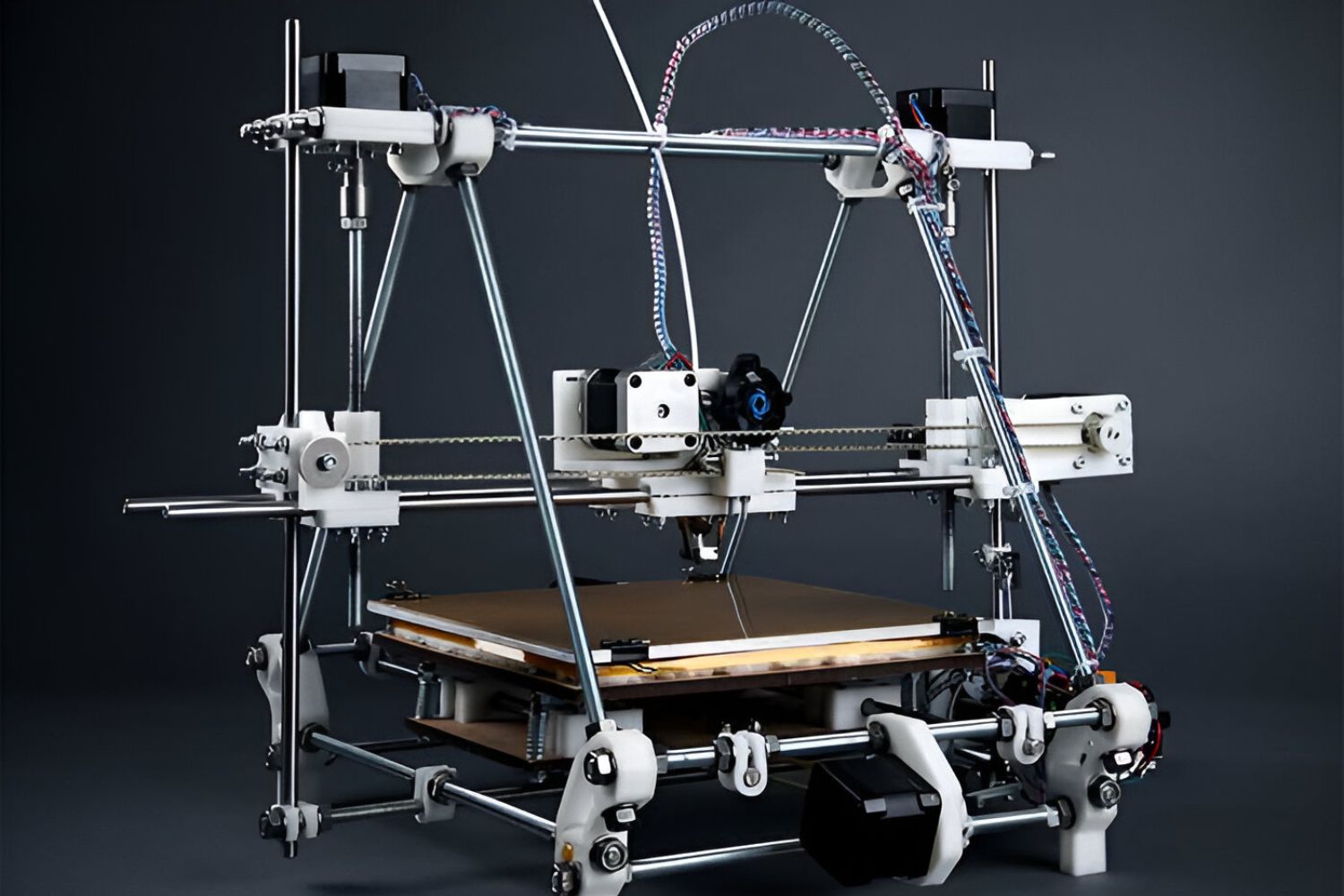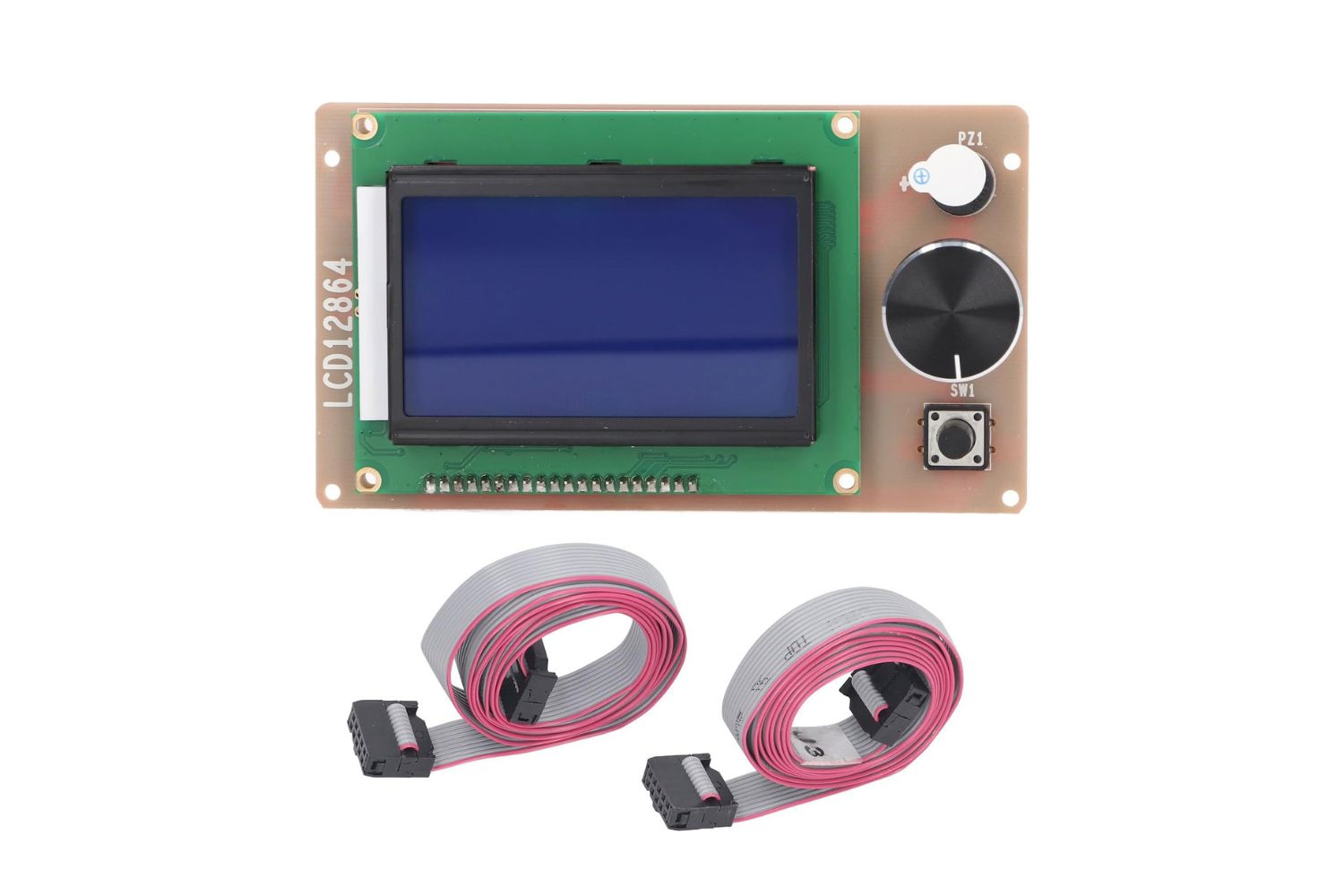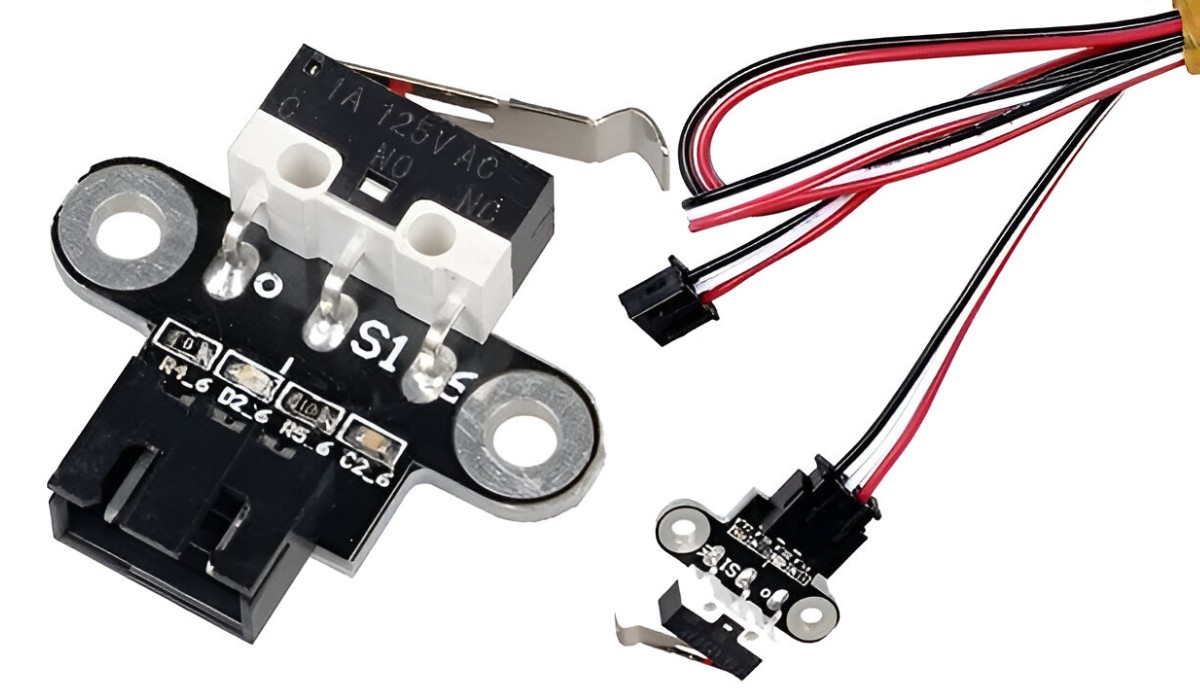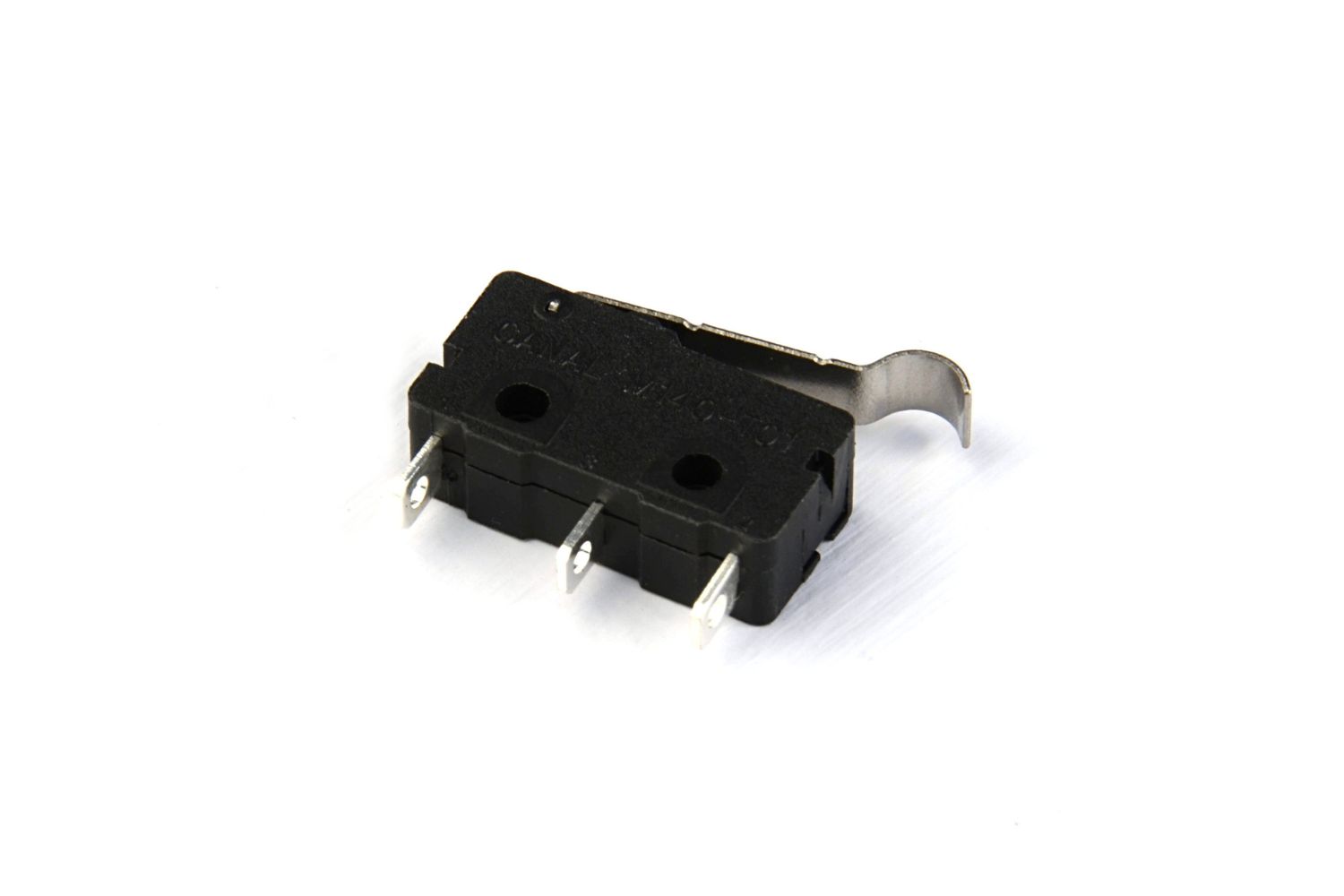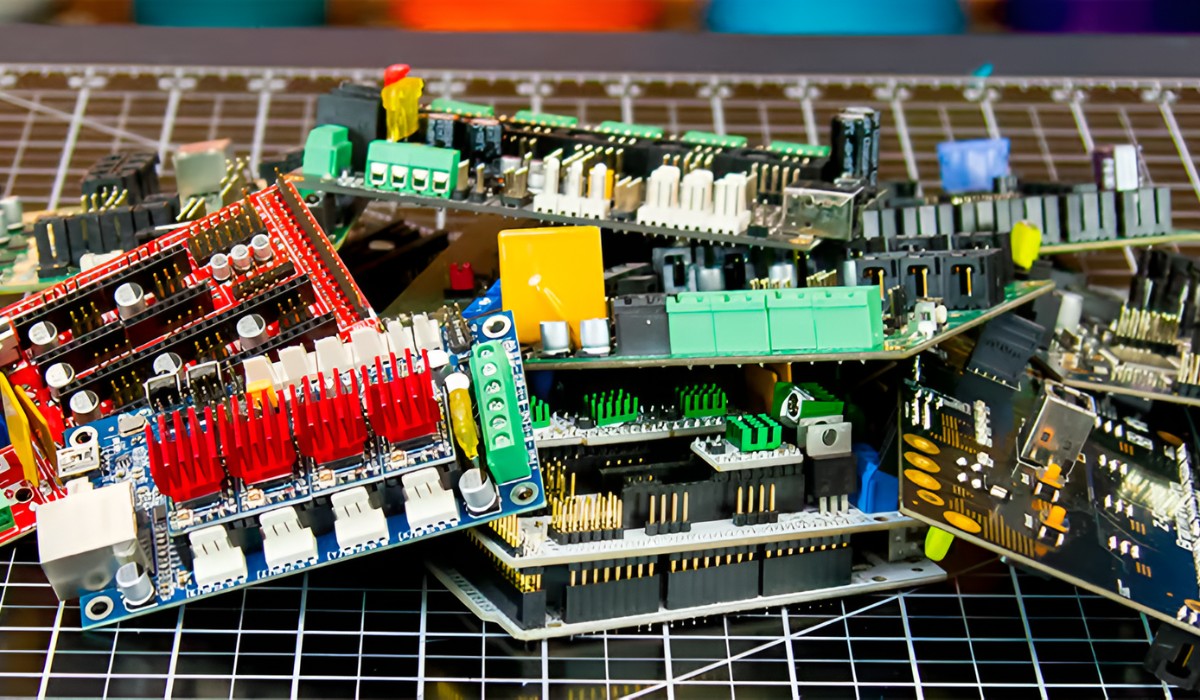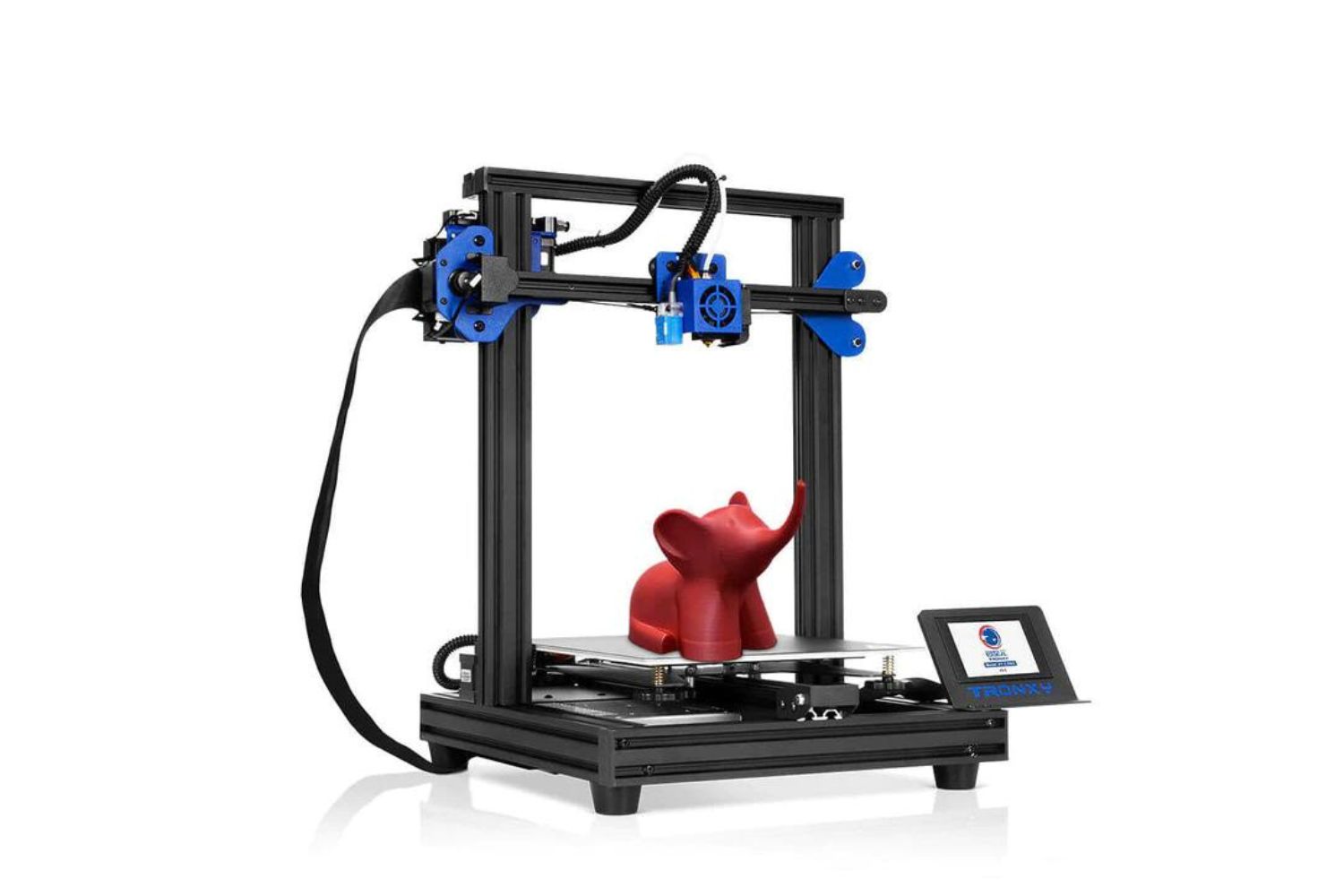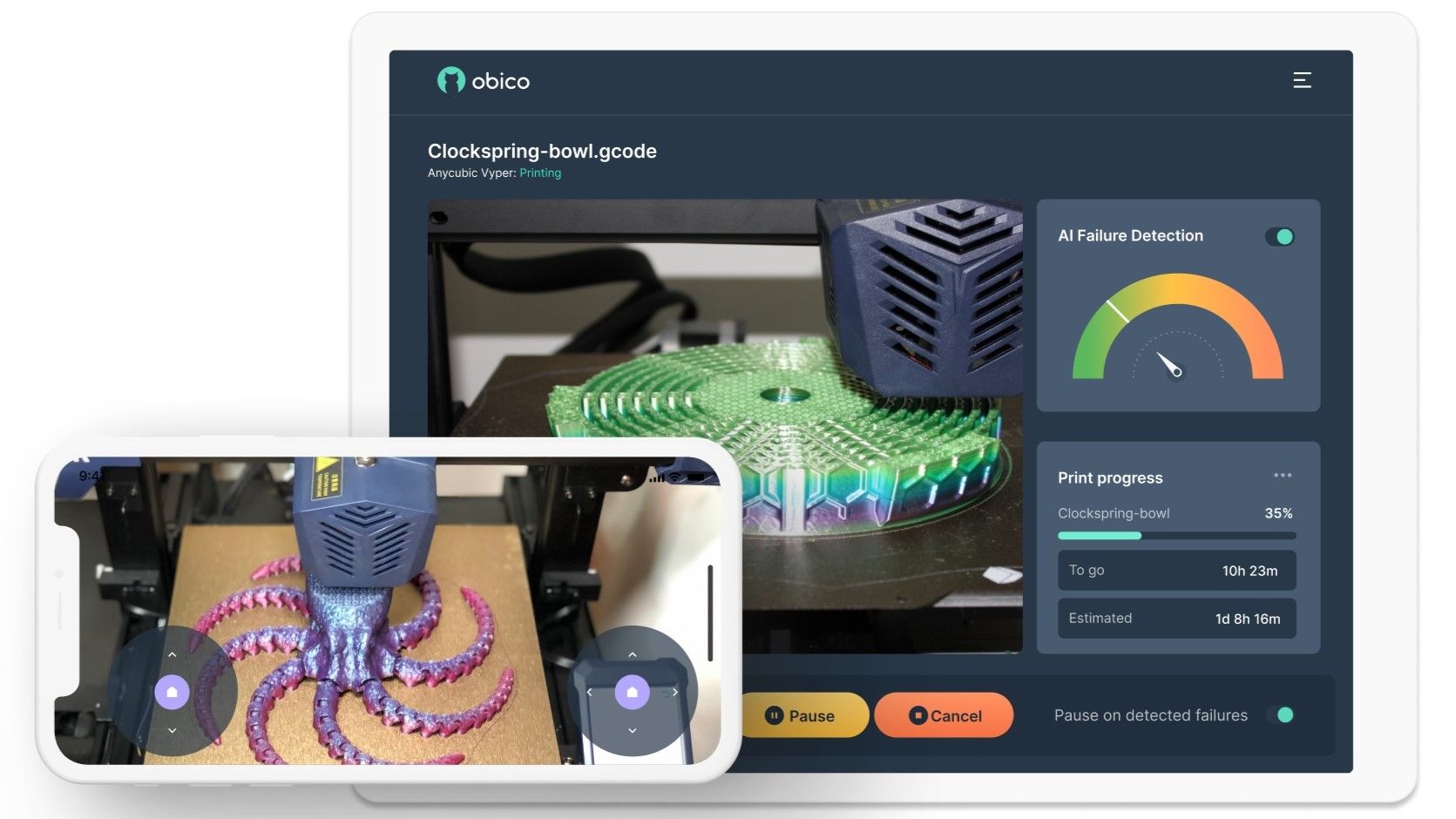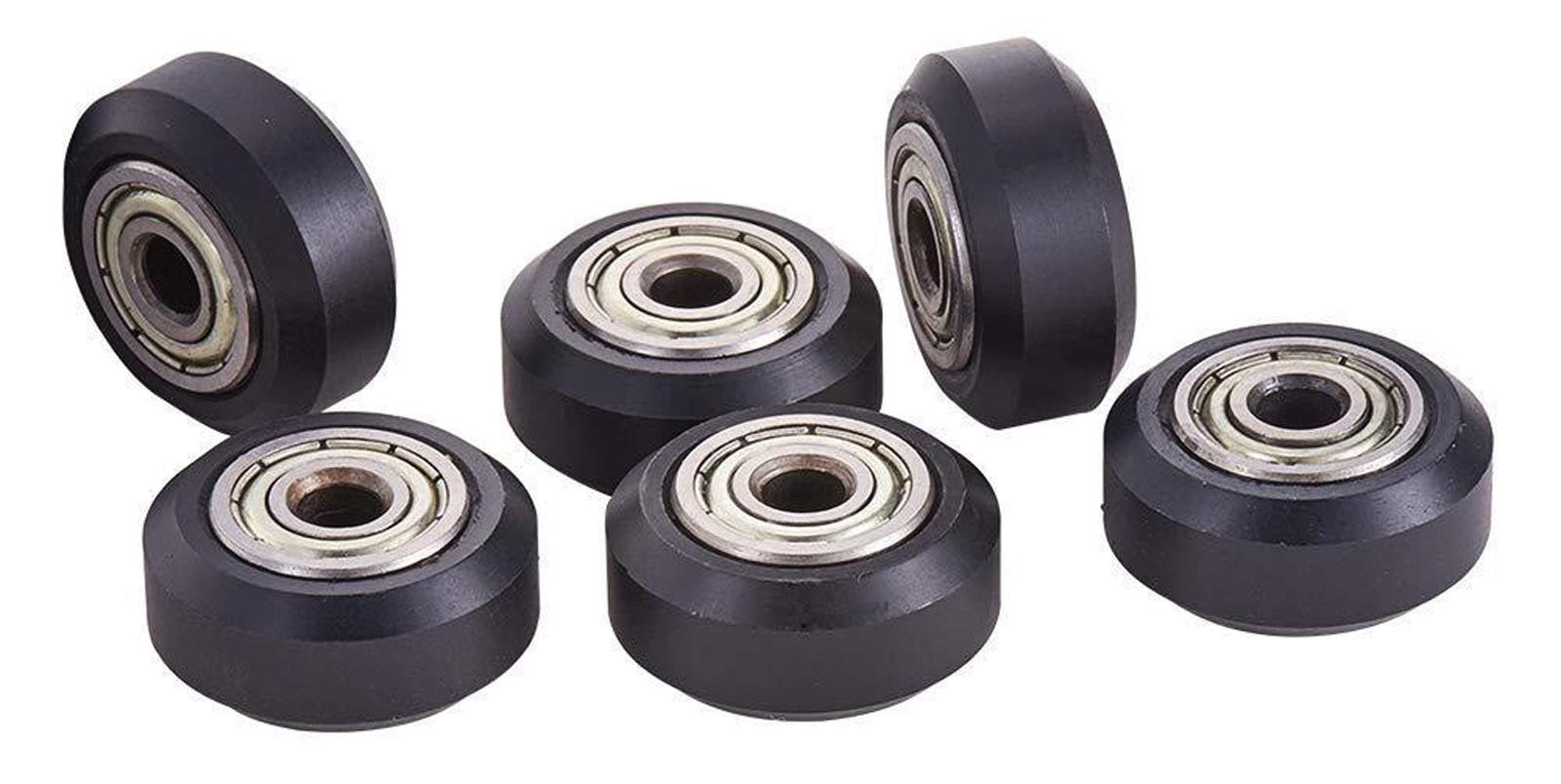Introduction
Nowadays, 3D printing technology has gained immense popularity for its ability to create three-dimensional objects with incredible precision and detail. One of the groundbreaking advancements in this field is the RepRap 3D printer. So, what exactly is a RepRap 3D printer?
What is a RepRap 3D Printer?
RepRap stands for “Replicating Rapid Prototyper,” which accurately describes its unique capability of self-replication. Unlike other conventional 3D printers, a RepRap printer is designed to produce most of its own parts. In simpler terms, it has the ability to create copies of itself. This self-replication feature makes RepRap printers significant contributors to the open-source and DIY (Do-It-Yourself) 3D printing community.
How Does a RepRap 3D Printer Work?
A RepRap printer operates based on the fused filament fabrication (FFF) technique. It utilizes a thermoplastic material, generally in the form of a filament, which is heated and extruded through a print nozzle. Layer by layer, the material is deposited onto a build plate, gradually creating the desired three-dimensional object. Through precise control of the heated nozzle and the movement of the print head, the RepRap printer can create intricate designs with incredible accuracy.
The open-source nature of RepRap printers encourages collaboration and innovation within the 3D printing community. This means that designs, software, and improvements are freely shared among users, fostering the growth and development of the technology.
The History of RepRap
The RepRap project was initiated by a scientist named Dr. Adrian Bowyer at the University of Bath in the early 2000s. Driven by the idea of creating a self-replicating machine, he developed the first RepRap 3D printer, the Darwin, in 2007. This breakthrough innovation paved the way for the widespread adoption of RepRap technology and the subsequent evolution of various RepRap printer models.
Since then, the RepRap community has grown exponentially, with enthusiasts from all around the world contributing to the development and enhancement of the printers. Today, there are numerous RepRap designs available, each with its own unique features and capabilities.
What is a RepRap 3D Printer?
A RepRap 3D printer is an innovative and revolutionary type of 3D printer that focuses on the principles of self-replication and open-source collaboration. Unlike traditional 3D printers, a RepRap printer is designed with the ability to create most of its own parts. This means that a RepRap printer can reproduce and replicate itself, leading to a potentially endless supply of printers.
The concept behind RepRap printers is rooted in the belief that the technology should be accessible and affordable to everyone. By making the design and specifications freely available to the public, RepRap encourages users to share and collaborate on improving and modifying the printers. This open-source philosophy has resulted in a vibrant and dynamic community of makers, tinkerers, and enthusiasts who continuously contribute to the development and evolution of RepRap technology.
One of the core advantages of RepRap printers is their affordability. By utilizing readily available materials and components, RepRap printers can be built at a fraction of the cost of commercial 3D printers. This affordability, combined with the ability to self-replicate, brings 3D printing within reach of individuals and communities who may not have had access to the technology otherwise.
In addition to being cost-effective, RepRap printers are also highly customizable. Users can modify and upgrade their printers by incorporating new features, enhancing performance, or adapting them to specific needs. This flexibility allows users to tailor their RepRap printers to meet their unique requirements, opening up opportunities for various applications and industries.
Another significant advantage of RepRap printers is the high level of detail and precision they can achieve. With the ability to print very thin layers and intricate designs, RepRap printers are suitable for producing complex prototypes, functional parts, and artistic creations. The precise control over the printing process allows for the creation of objects with exceptional quality and accuracy.
Overall, RepRap 3D printers are a game-changer in the world of 3D printing. Their self-replicating capability, affordability, open-source nature, and customizable features make them an attractive choice for both hobbyists and professionals alike. RepRap printers embody the spirit of collaboration, innovation, and accessibility, driving the progress of 3D printing technology and empowering individuals to explore the endless possibilities of additive manufacturing.
How does a RepRap 3D Printer Work?
A RepRap 3D printer operates based on the principle of fused filament fabrication (FFF), also known as fused deposition modeling (FDM). This printing technique involves the extrusion of a thermoplastic filament, which is melted and deposited layer by layer to create a three-dimensional object.
The printing process begins with a 3D model created using computer-aided design (CAD) software. The model is then converted into a series of instructions that the printer can understand. These instructions, known as G-code, contain specific details such as the position of the print head, the temperature of the nozzle, and the movement speed.
The thermoplastic filament, typically made of materials like PLA (polylactic acid) or ABS (acrylonitrile butadiene styrene), is loaded into the printer’s extruder. The extruder consists of a heated nozzle and a motor-driven mechanism that pushes the filament through the nozzle.
As the printing process begins, the filament is heated to its melting point inside the nozzle. Once melted, the molten plastic is pushed out through the nozzle and onto the build plate. The nozzle moves in an X and Y pattern, controlled by stepper motors, while the build plate moves in the Z-axis to allow for layer-by-layer deposition.
Each layer of the object is printed by extruding thin strands of molten plastic on top of the previous layer. As each layer cools and solidifies, it bonds with the layers below, gradually building up the object with precise accuracy. The process continues until the entire object is complete.
One noteworthy feature of RepRap printers is their ability to print with support structures. This means that if the object being printed has overhangs or intricate features that require additional support, the printer can generate scaffolding or support structures to ensure the stability and integrity of the print. Once the printing process is finished, these structures can be removed manually.
In addition to the printing process, RepRap printers also incorporate various other components and technologies to ensure smooth operation. These include stepper motors for precise movements, belts and pulleys for accurate positioning, a heated build plate to prevent warping, and cooling fans to quickly solidify the printed layers.
Overall, the functionality of RepRap printers is impressive in its simplicity yet remarkable in its ability to produce complex and detailed objects. From the initial design on a computer screen to the physical manifestation of the object, RepRap printers offer a fascinating glimpse into the world of additive manufacturing.
The History of RepRap
The RepRap project was born out of the vision and ingenuity of Dr. Adrian Bowyer, a researcher at the University of Bath, in the early 2000s. Driven by the desire to create a truly self-replicating machine, he laid the foundation for what would become the RepRap 3D printer.
The journey began in 2004 when Dr. Bowyer invented the concept of a machine that could produce most of its own parts. This was a groundbreaking idea that challenged the traditional manufacturing process and paved the way for a new era in 3D printing. The RepRap project was officially launched in 2005, with the aim of developing an open-source, self-replicating 3D printer.
The first RepRap 3D printer, named “Darwin,” was unveiled in 2007. It was a significant milestone in the project’s history, as it demonstrated the viability of the self-replication concept. Darwin was capable of producing around 50% of its own components, making it a true pioneer in the field of additive manufacturing.
Building upon the success of Darwin, the RepRap community continued to evolve and improve the technology. In 2008, the project introduced the second-generation 3D printer named “Mendel.” Mendel was designed to be more reliable, easier to build, and capable of printing more complex objects with higher accuracy.
As the RepRap community grew, so did the number of RepRap-derived printer models. Each new iteration brought advancements in functionality, performance, and ease of use. The designs became more refined, and the printers became increasingly accessible to a broader audience.
In 2010, the RepRap project reached another significant milestone with the release of the third-generation printer, “Prusa Mendel.” This model, developed by Josef Prusa, incorporated numerous improvements that made it one of the most popular RepRap designs to date. Prusa Mendel further spurred the proliferation of RepRap printers worldwide, driving the democratization of 3D printing technology.
Since then, the RepRap community has flourished. Enthusiasts, makers, and entrepreneurs from all corners of the globe have joined the movement, contributing their skills, knowledge, and creativity to the project. This collaborative spirit has led to the creation of numerous RepRap printer variants, each with its own unique features and capabilities.
Today, RepRap has become synonymous with self-replicating 3D printing and open-source innovation. It continues to be a driving force in the additive manufacturing industry, pushing the boundaries of what is possible and making 3D printing more accessible to individuals and communities worldwide. The history of RepRap is testament to the power of collaboration and the transformative potential of open-source technology.
Open-Source and Replicatable 3D Printing
One of the key principles that sets RepRap 3D printers apart is their commitment to open-source collaboration and replicability. The RepRap community firmly believes in the power of shared knowledge and encourages users to freely access, modify, and improve upon the designs and software associated with RepRap printers.
Open-source refers to the concept of making the design, software, and specifications of a product freely available for anyone to use, modify, and distribute. In the context of RepRap, this means that all the information, including the source code and assembly instructions, is accessible to the public. This transparency promotes the growth of the technology and allows users to contribute to its development and refinement.
By embracing open-source philosophy, RepRap empowers individuals and communities to take ownership of the technology. Users can customize their printers to meet their specific needs, adapt them for different applications, and experiment with new ideas. This level of flexibility and freedom fosters innovation and creativity, driving the continuous improvement of RepRap printers.
Furthermore, the replicability aspect of RepRap adds an extra layer of significance to the open-source principle. RepRap printers are designed to be self-replicating, which means that they can produce most of their own parts. This replication capability allows for the proliferation of printers without relying on traditional manufacturing methods.
Replicating a RepRap printer involves using an existing working printer to produce the components needed to assemble a new printer. These components can then be combined with standard off-the-shelf parts to create a fully functional RepRap printer. This self-replication capability not only reduces the cost of acquiring a printer but also creates a self-sustaining ecosystem where users can contribute to the growth of the RepRap community by sharing their replicable designs.
The open-source and replicable nature of RepRap printers has led to a vibrant and supportive community of users and enthusiasts. Collaborative spaces such as online forums, forums, and social media groups serve as platforms for sharing ideas, troubleshooting problems, and showcasing innovative projects. The collective intelligence and creativity of the community continue to push the boundaries of what is possible with RepRap technology.
Overall, the open-source and replicatable nature of RepRap 3D printing democratizes the technology, making it accessible to a wider audience. By fostering collaboration, innovation, and knowledge sharing, RepRap empowers individuals to take control of their own manufacturing capabilities and contribute to the exciting field of additive manufacturing.
Benefits of RepRap 3D Printers
RepRap 3D printers offer numerous advantages that have contributed to their widespread adoption and popularity within the 3D printing community. These benefits extend beyond just the ability to create physical objects, making RepRap printers a valuable tool for various applications and industries.
1. Affordability: RepRap printers are known for their cost-effectiveness. By utilizing readily available materials and components, RepRap printers can be built at a fraction of the cost of commercial 3D printers. The affordability of RepRap technology allows for greater accessibility and encourages participation from individuals and communities who may not have had access to 3D printing otherwise.
2. Open-Source Collaboration: The open-source nature of RepRap promotes collaboration and innovation within the 3D printing community. Users are encouraged to freely share and modify designs, software, and improvements, fostering a community-driven development process. This collaborative environment leads to the continuous enhancement of RepRap technology and the rapid evolution of printer designs and capabilities.
3. Customizability: RepRap printers offer a high level of customizability. Users have the flexibility to modify and upgrade their printers to meet their specific needs. This adaptability allows for the incorporation of new features, improved performance, or the adaptation of the printer for specialized applications. The ability to tailor a RepRap printer to individual requirements opens up a world of possibilities for various industries and creative endeavors.
4. Learning Experience: Building and operating a RepRap printer provides a valuable learning experience. Users gain a deeper understanding of the technology, mechanics, electronics, and software that drive 3D printing. The DIY aspect of RepRap printing encourages hands-on learning, problem-solving, and technical skills development. This educational aspect not only benefits individuals but also contributes to the growth of the 3D printing industry as a whole.
5. High Detail and Precision: RepRap printers are capable of delivering exceptional detail and precision in the objects they produce. With the ability to print very thin layers and intricate designs, RepRap printers excel in creating complex prototypes, functional parts, and artistic creations. The precise control over the printing process ensures a high degree of accuracy, making RepRap printers suitable for a wide range of applications, including engineering, architecture, and jewelry design.
6. Community and Support: The RepRap community is an active and supportive network of users and enthusiasts. Online forums, social media groups, and dedicated websites offer a wealth of resources, knowledge, and assistance to RepRap printer owners. This strong community provides a valuable support system for troubleshooting, sharing ideas, and collaborating on projects, fostering a sense of camaraderie and encouraging the growth and success of RepRap technology.
In summary, the benefits of RepRap 3D printers include affordability, open-source collaboration, customizability, educational value, high detail and precision, and a supportive community. These advantages make RepRap printers a versatile and valuable tool for individuals, businesses, and educational institutions, propelling the growth and widespread adoption of 3D printing technology.
Different Types of RepRap 3D Printers
The RepRap project has given rise to a variety of RepRap 3D printer models, each with its own unique features and capabilities. These different types of RepRap printers cater to various requirements and applications, offering users a range of options to choose from.
1. Prusa i3: The Prusa i3 is one of the most popular RepRap printer designs available. It is known for its simplicity, affordability, and reliability. The Prusa i3 uses a Cartesian-style frame and features a robust structure, making it capable of printing large objects with good precision.
2. CoreXY: The CoreXY design is another common type of RepRap printer. It utilizes a unique mechanism that uses two sets of belts to control the movement of the print head. The CoreXY design provides excellent stability, allowing for higher speeds and more accurate prints.
3. Delta: The Delta RepRap printers feature a different approach to movement mechanics. They use three vertical towers with parallel arms that move the print head in a coordinated manner. The Delta design enables fast and precise printing over a tall cylindrical build volume.
4. MendelMax: The MendelMax is a sturdy and highly adaptable RepRap printer model. It features an aluminum frame, which provides excellent stability and durability. The MendelMax design offers several configuration options, allowing users to customize the printer to their specific needs.
5. Printrbot: The Printrbot RepRap printers are known for their compact size and portability. They are often designed to be smaller and simpler, making them an ideal choice for beginners or users with limited space. Despite their smaller footprint, Printrbot printers can still deliver impressive print quality.
6. RepRap Simpson: The RepRap Simpson is a unique delta-style 3D printer that focuses on simplicity and ease of assembly. This design boasts a reduced number of parts and a straightforward construction process, making it an attractive option for those new to RepRap printers.
These are just a few examples of the different types of RepRap 3D printers available. There are many more designs and variations within the RepRap community, each offering its own advantages and suited for different applications. The diverse range of RepRap printer models ensures that users can find the right printer to meet their specific needs, whether it’s printing large objects, achieving high speeds, or maintaining portability.
Regardless of the specific RepRap printer model chosen, users can enjoy the benefits of open-source collaboration, affordability, and the ability to replicate and customize their printers. The availability of various RepRap printer types further illustrates the versatility and adaptability of RepRap technology in meeting the diverse needs of 3D printing enthusiasts.
RepRap 3D Printer Components
A RepRap 3D printer consists of several key components that work together to bring the printing process to life. Understanding these components is essential for building, maintaining, and troubleshooting a RepRap printer.
1. Frame: The frame provides the structural support for the printer, holding all the components in place. Common frame materials include acrylic, aluminum, or steel. The frame’s stability and rigidity are crucial for maintaining accurate prints.
2. Print Head: The print head, also known as the extruder, is responsible for melting and depositing the filament onto the build plate. It typically consists of a heating element, a nozzle, and a cooling mechanism. The print head moves in the X and Y axes to precisely deposit the melted material.
3. Stepper Motors: Stepper motors control the movement of the print head and the build plate. These motors convert electrical signals into precise mechanical movements, allowing for accurate positioning and control over the printing process.
4. Control Board: The control board serves as the brain of the RepRap printer. It receives instructions from the computer and translates them into signals that control the movement of the motors, heating elements, and other components. Common control board options include Arduino-based boards or dedicated 3D printer control boards.
5. Build Plate: The build plate provides a flat and stable surface for the object being printed. It can be made from various materials such as glass, aluminum, or heated beds. The build plate moves in the Z-axis (up and down) to accommodate the layer-by-layer printing process.
6. Belts and Pulleys: Belts and pulleys are used to transmit the motion from the stepper motors to the print head and build plate. They provide precise and synchronized movements to ensure accurate positioning of the components during the printing process.
7. Power Supply: The power supply provides the necessary electrical energy to the printer components. It typically converts alternating current (AC) power from an outlet into direct current (DC) power required for the printer’s operation. The power supply needs to be appropriately matched to the printer’s voltage and power requirements.
8. Filament Spool and Feeder: The filament spool holds the thermoplastic filament, which feeds into the print head. The filament feeder uses gears or a series of rollers to push the filament into the extruder, ensuring a steady and controlled flow of material during the printing process.
9. Cooling Fans: Cooling fans are strategically placed to cool down the printed layers quickly. They help prevent warping and improve the overall print quality by solidifying the material more efficiently. Cooling fans are typically directed at the print head and the printed object.
10. Control Interface: The control interface provides a means for users to interact with the printer. This can include an LCD screen, buttons, and a rotary encoder for navigating menus, adjusting settings, and monitoring the progress of the print.
These are the fundamental components that make up a RepRap 3D printer. Understanding how these components work together is essential for building, operating, and maintaining a RepRap printer. Having knowledge of the components also facilitates troubleshooting and customization, allowing users to optimize their printing experience and achieve the desired results.
Materials Compatible with RepRap 3D Printers
RepRap 3D printers are compatible with a wide range of materials, allowing users to choose the most suitable material for their specific printing needs. The versatility of RepRap printers enables printing with various thermoplastic filaments, each offering unique characteristics and applications.
1. PLA (Polylactic Acid): PLA is one of the most commonly used materials for 3D printing. It is a biodegradable and environmentally friendly thermoplastic derived from renewable resources such as cornstarch or sugarcane. PLA is easy to print, has a low warp tendency, and produces little to no unpleasant odors during printing. It is often favored for its ease of use, vibrant colors, and suitability for prototypes and artistic prints.
2. ABS (Acrylonitrile Butadiene Styrene): ABS is a widely used thermoplastic known for its durability and impact resistance. It offers higher strength and flexibility compared to PLA but requires a heated bed during printing to minimize warping. ABS is a popular material for functional parts, mechanical components, and assemblies that require higher toughness and temperature resistance.
3. PETG (Polyethylene Terephthalate Glycol): PETG is a versatile material that combines the best properties of both PLA and ABS. It offers high strength, good layer adhesion, and resistance to moisture and chemicals. PETG is relatively easy to print, making it a popular choice for a wide range of applications, including mechanical parts, prototypes, and food-safe containers.
4. TPU (Thermoplastic Polyurethane): TPU is a flexible filament known for its excellent elasticity and durability. It provides a rubber-like feel and can withstand repeated bending and stretching without losing its shape. TPU is commonly used for producing soft, wearable items, such as phone cases, watch bands, and shoe soles.
5. Nylon: Nylon is a strong and durable thermoplastic with excellent mechanical properties. It offers high tensile strength, heat resistance, and chemical resistance. Nylon is suitable for functional parts, tooling, and engineering applications that require enhanced mechanical performance.
6. PC (Polycarbonate): PC is a high-temperature-resistant thermoplastic known for its impressive strength and impact resistance. It is commonly used for printing objects that require extreme toughness, such as functional prototypes, engineering components, and protective covers.
These are just a few examples of the materials compatible with RepRap 3D printers. It’s worth noting that some specialized RepRap printer variants might support additional materials, such as wood-based filaments, metal-filled filaments, or even food-safe materials for culinary applications.
When choosing a material for a RepRap printer, it is important to consider the specific requirements of the print, such as mechanical strength, temperature resistance, or flexibility. Additionally, factors such as nozzle temperature, heated bed, and printer settings may need adjustment depending on the material being used. Experimentation and understanding the material’s properties are key to achieving successful prints with RepRap printers.
Applications of RepRap 3D Printing
RepRap 3D printing technology has revolutionized various industries and opened up new possibilities for individuals, businesses, and educational institutions. The versatility, affordability, and accessibility of RepRap printers have led to a wide range of applications across different fields.
1. Prototyping and Product Development: RepRap 3D printers offer an efficient and cost-effective solution for prototyping and product development. With their ability to quickly produce physical models, designers and engineers can iterate and test their ideas in a shorter timeframe. This saves time and resources, allowing for faster product development cycles.
2. Customization and Personalization: RepRap 3D printing enables customization and personalization like never before. From personalized accessories and customized phone cases to tailored-fit orthopedic devices, RepRap printers give individuals the ability to create unique and personalized objects that suit their specific preferences or needs.
3. Education and Research: RepRap printers have found widespread adoption in educational institutions for teaching purposes. They provide hands-on learning experiences, fostering creativity, problem-solving skills, and technical understanding. RepRap printers enable students to explore the possibilities of additive manufacturing and make their ideas tangible.
4. Art and Design: RepRap printers have become valuable tools for artists and designers. The ability to bring digitally created designs to life in three dimensions opens up a whole new realm of artistic expression. RepRap printers allow artists to push the boundaries of traditional art forms and create intricate, visually stunning sculptures and installations.
5. Manufacturing Tools and Spare Parts: RepRap printers play a role in small-scale manufacturing and the production of tools and spare parts. Companies and individuals can use RepRap printers to create custom jigs, fixtures, and other manufacturing aids. RepRap technology also enables the production of spare parts that are no longer available or are costly to obtain, contributing to maintenance and repair solutions.
6. Medical and Healthcare: The medical and healthcare sectors have embraced RepRap printers for various applications. These printers are used to create patient-specific anatomical models for surgical planning, prosthetics, orthotics, and assistive devices. The customization and flexibility of RepRap printers make them valuable tools for advancing patient care and improving quality of life.
7. Sustainability and Recycling: RepRap printers promote sustainability and recycling efforts. With their ability to use recycled and biodegradable materials, RepRap printers reduce waste and contribute to a more sustainable manufacturing process. RepRap technology also aligns with the principles of the circular economy by enabling the recycling and reusing of plastic materials in the printing process.
These are just a few examples of the applications of RepRap 3D printing. The technology’s versatility and accessibility continue to inspire new and innovative uses in various industries. As RepRap technology continues to evolve, we can expect even more groundbreaking applications that harness the power of additive manufacturing to transform the way we create, design, and innovate.
Conclusion
RepRap 3D printers have revolutionized the world of additive manufacturing with their self-replication capability, open-source collaboration, and customizable nature. These printers empower individuals, businesses, and educational institutions to explore the possibilities of 3D printing and bring their ideas to life.
The RepRap project, initiated by Dr. Adrian Bowyer, has fostered a strong and vibrant community of users and enthusiasts who contribute to the growth and development of RepRap technology. The open-source nature of RepRap encourages collaboration and innovation, making 3D printing accessible to a wider audience and driving the advancement of the technology.
RepRap printers offer numerous benefits, including affordability, customizability, and the ability to replicate themselves. These printers have found applications in various fields, including prototyping, education, art and design, healthcare, and small-scale manufacturing. The versatility of RepRap printers continues to inspire creativity and innovation, pushing the boundaries of what is possible with 3D printing.
As the RepRap community evolves and new printer designs emerge, the future of RepRap 3D printing holds immense promise. With ongoing advancements in materials, software, and printer capabilities, RepRap technology is poised to continue transforming industries, empowering individuals, and shaping the future of additive manufacturing.
Whether it’s unleashing creativity, making personalized objects, or driving advancements in various industries, RepRap 3D printers have made a significant impact. With their affordability, replicability, and open-source collaboration, RepRap printers have revolutionized the world of 3D printing, making it a technology accessible to everyone.







